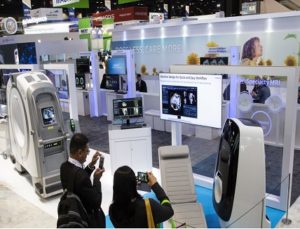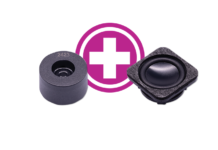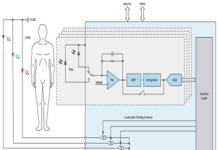
Samsung Electronics is showcasing its latest Ultrasound, Digital Radiography, Computed Tomography (CT), Magnetic Resonance Imaging (MRI) concept and their software innovations at the Radiological Society of North America (RSNA) 2018 Annual Meeting at McCormick Place in Chicago.
Samsung showcases several types of AI based diagnostic imaging software:
- Ultrasound System – S-Detect for Breast is AI based software which analyzes breast lesions using ultrasound images, and has been implemented into Samsung’s ultrasound systems dedicated to Radiology. It assists in standardizing reports and classification of suspicious breast lesions by incorporating BIRADS ATLAS (Breast Imaging-Reporting and Data System, Atlas)
According to a recently published study by radiology professor Tommaso Bartolotta from the University of Palermo in Italy, S-Detect for Breast has shown to assist various degrees of improvement in the overall diagnosis of breast lesions. When using S-Detect for Breast, the diagnostic accuracy for doctors with experience of four years or less improved from 0.83 to 0.87 (AUC, Area Under Curve). S-Detect for Breast could be a useful tool for supporting and guiding breast diagnosis among non-expert breast imaging physicians (Only shape and orientation descriptors are automatically classified in the United States).
- Digital Radiography – By using AI technology, the ‘Bone Suppression’ function, which reduces the bone signal from the chest x-ray image, clearly brings out the lung tissues obscured by the bones. ‘SimGrid’ has also been introduced as a solution to ease the workflow to replace grids, while providing excellent image quality with reduced scatter artifacts. According to a recently published study, ‘SimGrid™’ provided image quality almost as good as the images taken with a physical grid.
The Auto Lung Nodule Detection (ALND) is a CAD (Computer Aided Detection) solution based on AI technology used in the detection of lung nodules and is 510(k) pending. According to a recent study in press in Journal of Thoracic Imaging, ALND improved the detection sensitivity of lung cancer nodules 3 cm or smaller in chest radiographs by seven percentage points to 92 percent, compared with the average of six chest radiologists.
- Computed Tomography – Samsung has introduced the intra-cranial hemorrhage package that combines a mobile stroke unit with a radiological computer aided triage and notification solution based on AI technology.
- Magnetic Resonance Imaging – Utilizing AI technology, Samsung is developing a technology to display information such as knee cartilage thickness as well as images of knee arthritis patients. The software is a prototype and not for sale in any region of the world.
“We are pleased that Samsung’s AI technologies have been successfully applied to the existing diagnostic imaging devices and have been well received in the market,” said Dongsoo Jun, President of Health & Medical Equipment Business at Samsung Electronics and CEO of Samsung Medison. “As a comprehensive diagnostic imaging solution provider, we will continue to strengthen our technologies through collaboration with hospitals and healthcare professionals. We aim to bring together radiologists and AI to fill in the gaps for improved healthcare management.”



















